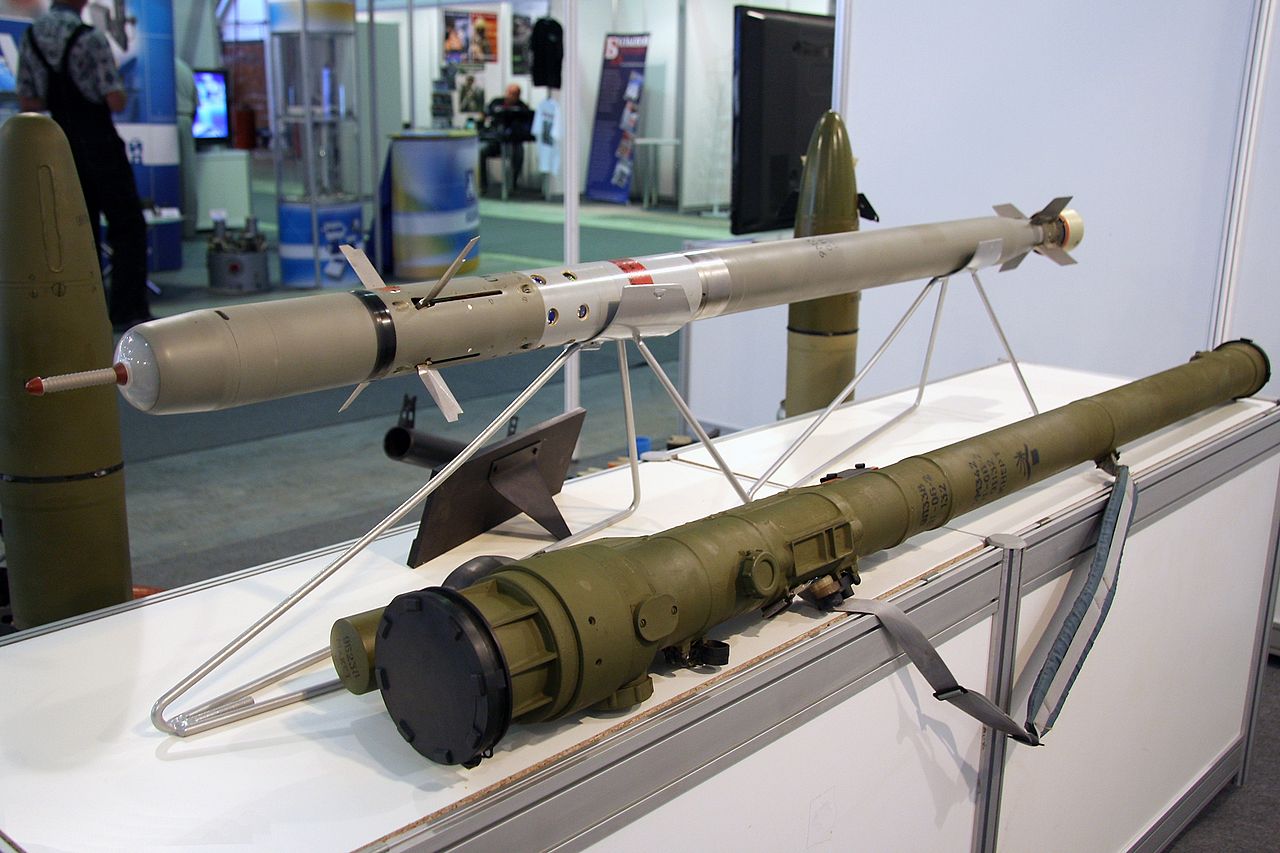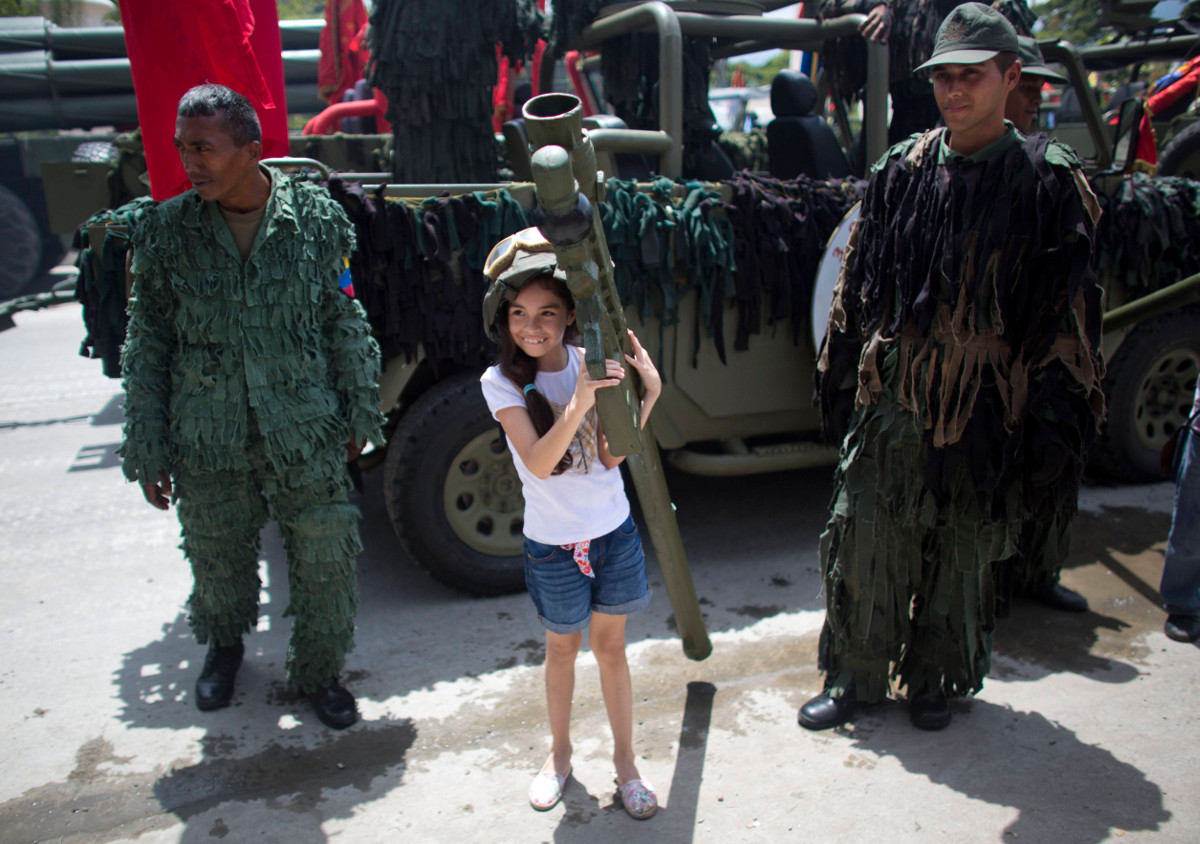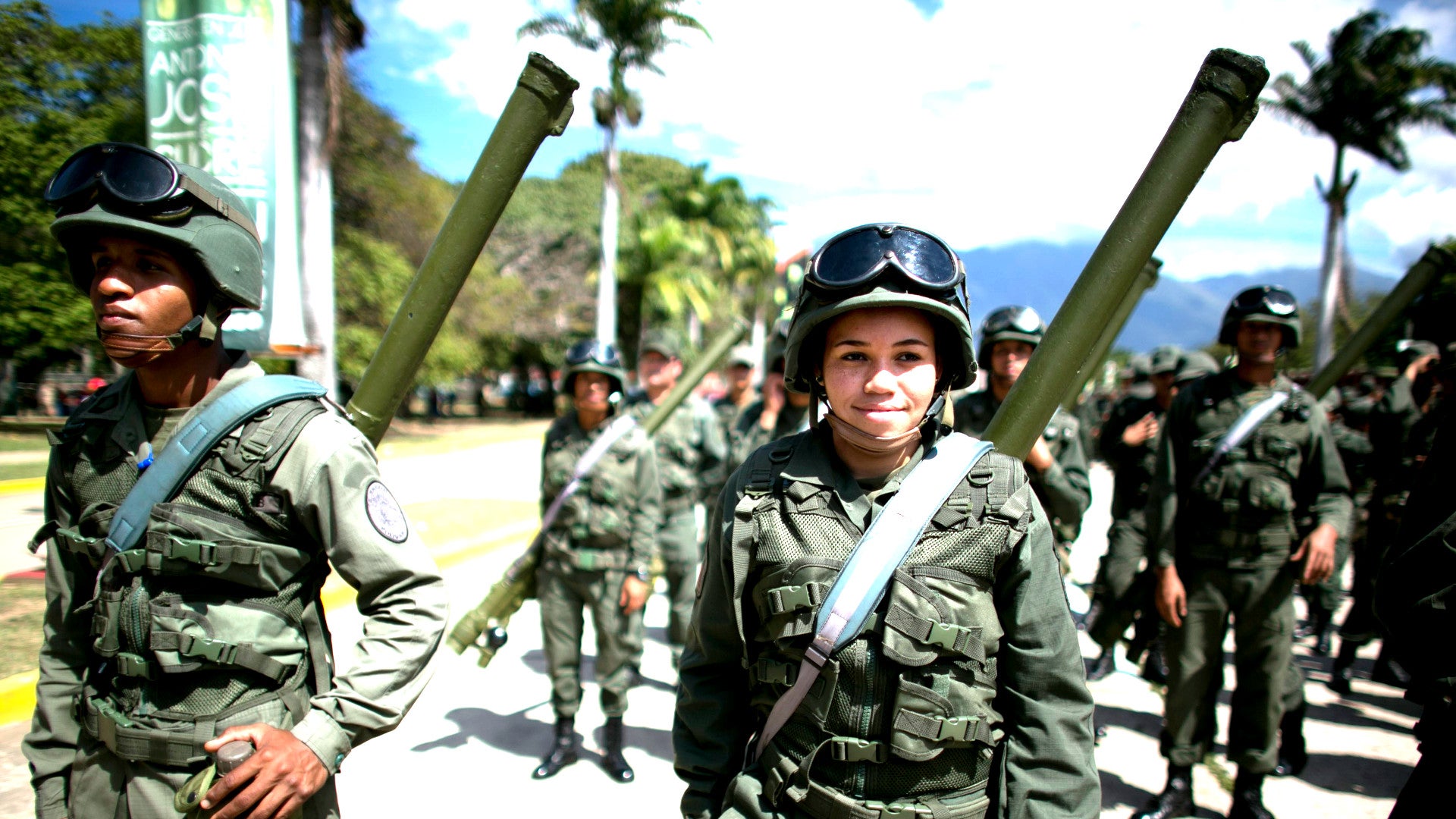As political and humanitarian crises in Venezuela continue to grow, observers are increasingly worried about the stability of the country’s institutions, including the military. If the government in Caracas were to collapse without a clear transition plan in place, it could throw the country’s armed forces into disarray and potentially create a dangerous space where sensitive weapons, such as shoulder-launched surface-to-air missiles (SAM), end up on the black market.
At a public hearing on May 11, 2017, director of the Central Intelligence Agency (CIA) Mike Pompeo told Senators that he was worried about advanced weapons slipping out of Venezuela during the crisis. He specifically mentioned the advanced Russian-made 9K338 Igla-S man-portable air-defense systems (MANPADS), also known as the SA-24. This latest version of the Igla family and among the most advanced such weapons available on the market today.
“It is a real threat,” he declared. “[But] we have not seen any of those major arms transfers take place, we don’t have any evidence that those have taken place to date.”
Compared to older variants, the Igla-S has a longer range and a significantly larger warhead. Its maximum range of 20,000 feet is more than 5,000 greater than that of the iconic American FIM-92 Stinger MANPADS. The exact speed of the S model is not publicly available, but one would imagine the designers would not have wanted it to be slower than the average speed of earlier types, which was approximately 1,300 miles per hour. The Stinger’s average flight speed is 1,600 miles per hour.

More importantly, the S variant has a dramatically improved infrared seeker head with advanced proportional navigation, making it less likely that flares and other countermeasureswill distract the missile, according to one U.S. Army manual. This sensitive guidance system is said to have a significantly greater probability of intercepting the target, as well as a better chance to hit a vital area in the process, compared to earlier versions and analogous weapons.
These attributes make them a realistic threat to even the most recent 4th generation Western fighter jets – and that was one of the reasons Venezuela bought them in the first place. After first being elected president of Venezuela in 1999, firebrand leader Hugo Chavez quickly drew the ire of the United States with his open endorsement of socialist and leftist governments and apparent support for leftist guerrilla movements such as the FARC in Colombia. Though they denied any involvement, American officials openly endorsed a brief coup attempt in 2002.

So, between 2005 and 2008, specifically citing the need to defend against an American invasion, the Venezuela government went on an arms shopping spree. Thanks to billions of dollars in low-interest loans from the Russian government, by 2013, Venezuela had obtained a formidable arsenal of T-72 tanks, Msta-S self-propelled howitzers, Su-30 Flanker fighter jets, S-300 and Tor-M1 mobile SAMs, and the Iglas, among other items. On May 22, 2017, Reuters reported that it had obtained a Venezuela military record that showed country had a total inventory of approximately 5,000 Igla-S missiles.
“I have no doubt that the Americans want to come here in search of oil and we must be ready to face them,” Venezuela General Jesus Gonzalez reportedly told Mexican media in 2008. “If you want peace, prepare for war.”

The problem is that Venezuela seems to be edging toward a war of its own. In 2013, Vice President Nicolás Maduro took power after Chavez died of cancer. Maduro sought to both continue his predecessor’s “revolution” and consolidate his own power. Since then, however, the country has suffered historic shortages of even the most basic goods, leading to increasing dissatisfaction with the ruling party. In March 2017, protesters took to the streets to demand new elections. Maduro has repeatedly dismissed civil unrest against his administration as an attempted coup and the work of American agents seeking to overthrow him.
In an increasingly chaotic situation, where there have been reports that security forces have in some cases joined protesters, there is the distinct possibility that less scrupulous individuals could sell or steal weapons from government stockpiles. While it might be hard for anyone to smuggle out tanks or fighter jets, small arms and light weapons are much easier to pilfer.

And 5,000 Igla-S missiles on the open market would definitely be a serious concern. Relatively simple to use, these shoulder-fired missiles would be a prize acquisition for terrorists and criminals around the world. There are already decades of experience of how effective these weapons can be, even in the hands of insurgents with limited training. The most notable example was American deliveries of Stingers to Afghan fighters battling the Soviet Union in Afghanistan in the 1970s and 80s. Shoulder-launched missiles have only spread further around the world since then, becoming an increasing threat to both military and
MANPADS have been a notable feature of the fighting in Iraq and Syria, though they haven’t been responsible for a significant number of downed aircraft. By and large, the weapons involved have been older and significantly less capable Russian and Chinese missiles, including earlier Igla types, which are more easily fooled by infrared countermeasures common on most western military aircraft. Critics of the regime of Bashar Al Assad Damascus have repeatedly floated the idea of sending the weapons to rebel groups to help fend off air attacks and level the battlefield equation that has tilted Assad’s way dramatically since Russian air power intervened in the conflict over a year and a half ago. Of course, Russian planes and helicopters have countermeasures, too, which probably explains why they’ve been so resistant to attacks so far.
“Proliferation aside, these infrared-guided shoulder-launched weapons are essentially low-altitude weapons that are difficult to employ and relatively easy to defeat,” U.S. Air Force veteran Michael Pietrucha, who served as an irregular warfare operations officer, argued in a piece for War on the Rocks. “In the tens of thousands of sorties flown in the last two decades by U.S. and NATO aircraft in the Balkans, Iraq and Afghanistan, only four fixed-wing combat aircraft have been hit (and two downed) by MANPADS. None of the losses was an American aircraft.”
Of course this doesn’t take into account losses where MANPADS may have been responsible, not to mention many other mission kills that have occurred when aircraft have been damaged severely by MANPADS, and that’s not to say the older designs aren’t dangerous under the right circumstances.
Rebels in Syria have claimed to have shot down numerous jets and helicopters, with at least some of those reports turning out to be true. In Iraq, ISIS terrorists have knocked down a number of Iraqi fixed-wing attack aircraft and choppers. The situation became so worrisome that in 2015, the U.S. Special Operations Command issued an urgent request to upgrade 11 unspecified aircraft with additional defensive equipment against shoulder-fired missiles. The author obtained a heavily redacted copy of this document via the Freedom of Information Act.
“The … threat environment has changed significantly in recent years,” Matt Schroeder, a senior researcher at Small Arms Survey and expert in the proliferation MANPADS, told the author in 2016. “There has been a sharp uptick in sightings of illicit missiles in many countries, including recent generation systems not previously seen outside of government control.”
But, thankfully, the SA-24 has thankfully remained largely off the battlefield, at least so far. After rebels ousted and executed long-time Libyan dictator Muammar Gaddafi in 2011, there was a concern that militants and terrorists would get their hands on that country’s stores of shoulder-fired missiles, including SA-24s. Journalists and researchers subsequently determined that the only Igla-S missiles Libyan forces had were for vehicle-mounted Strelets launchers and could not work with the shoulder-stock and grip assembly associated with the MANPADS version. Differentiating the various Igla variants is a complex task. Apparent Libyan missiles did later turn up in Lebanon, according to Small Arms Survey, but again these were for the Strelets system.

In 2012, a Syrian rebel posed with what appeared to be an SA-24, likely captured from government forces. “As far as I know, this is the first SA-24 MANPADS ever photographed outside of state control,” Schroeder, then working for the Federation of American Scientists, told The New York Times at the time. By 2014, Schroeder had found evidence of eight different types of missiles in the hands of rebels in Syria, but evidence of only a very small number shoulder-launched Igla-S.
In 2015, observers spotted SA-24s in Ukraine’s breakaway Donetsk region. However, the operators seemed to be largely Russian “volunteers,” leaving the weapons under the oversight of Moscow’s troops, rather than in the hands of Kremlin-backed separatists. But the fighting in eastern Ukraine had already involved significant numbers of MANPADS. Rebel troops and their Russian partners scored a number of kills in 2014 alone with shoulder launched SAMs, including downing a number of Mi-8 and Mi-24 helicopters and an An-30 surveillance aircraft. The pro-Russian separatists also claimed to have shot down other planes and choppers, including an Su-25 Frogfoot ground attacker and an Il-76 transport.
Unfortunately, any significant losses of SA-24s from Venezuela stocks could lead to an explosion of these improved missiles on the international black market. Whatever happens to the government in Caracas, the country’s security forces hopefully stay professional and maintain control over their arsenals.
Contact the author: joe@thedrive.com
